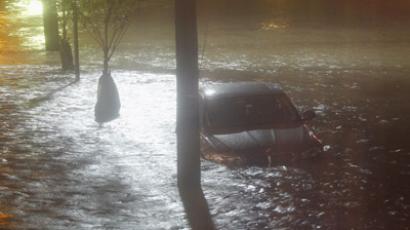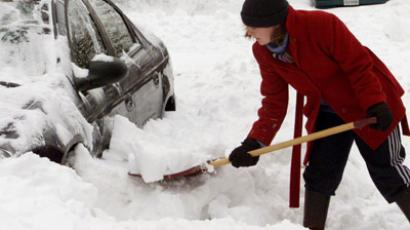Sandy volunteers facing same risks as 9/11 first responders

Volunteers and workers cleaning up the devastated regions flooded by Hurricane Sandy are facing dangerous mold and asbestos contamination, which could cause illness and litigation if they do not properly protect themselves.
Similar to the post-9/11 cleanup, unprotected workers may be subjecting themselves to crippling illnesses that could result in future lawsuits against those organizing the cleanup.Greg Floyd, president of the Teamsters Local 237, said his nightmare had come true: mold is spreading rapidly through the homes and damaged buildings devastated by Hurricane Sandy, he told the Huffington Post. A month and a half after the storm struck New York City, the fungus has spread so rapidly that Floyd has held back thousands of public employees from helping in the cleanup process. His workers don’t have the training and protective equipment necessary to battle the fast-growing mold, which can cause severe respiratory health complications. Floyd fears that his organization will suffer the consequences of a legal battle if he sends untrained workers to battle the mold.But the situation is dire and in need of assistance. Many hurricane victims whose homes are infested with the fungus do not have alternate living options and must therefore take the risk to remain in their contaminated homes. Those in the Rockaways are hardest hit by mold, but the US Health Department has no guidelines as to how severe the contamination must be before considering an evacuation.The Occupational Safety and Health Administration (OSHA) acknowledged the problem Wednesday by publishing a fact sheet on the hazards of mold and ways workers and volunteers can protect themselves from inhaling the fungus. Since the mold risk has kept many cleanup workers from helping, volunteers have been trying to compensate for the lack of help by themselves trying to sterilize the city. Many of these volunteers have no training or protective equipment and are putting their lives at risk by entering contaminated buildings.The New York State Department of Labor is planning to send 5,000 public workers to help with the cleanup as part of a federally funded, $27.7 million program. Floyd is concerned for the well-being of these workers. OSHA agents were recently forced to remove 6,500 workers from hazardous conditions in Sandy-affected areas, most of which were equipped with protective gear, which indicates the severity of the contamination. While mold is the most serious post-Sandy contaminant, asbestos has also emerged from the rubble, and untrained workers may not be able to stop the growth of these contaminants.Floyd fears the similarities between the post-Sandy cleanup too closely resemble the conditions after 9/11.“Workers were sent to Ground Zero without masks, without protective gear, and long after 9/11 they got sick,” he told the Huffington Post. “What’s the long-term effect going to be on these workers based on such a short-term, short-sighted decision?”Personal injury lawyers are still representing 9/11 recovery workers who became sick from lack of protective equipment during the cleanup. If a significant number of cleanup workers develop severe respiratory illnesses in the next few months, lawyers may become swamped representing post-Sandy crew members in addition to their post-9/11 clients, said Personal Injury Attorney Michael Barasch.“While we think that the type of contamination and exposure is very different than during 9/11, we are very concerned that we will suffer similar consequences,” said Joel Schufro, executive director of the New York Committee for Occupational Safety.














